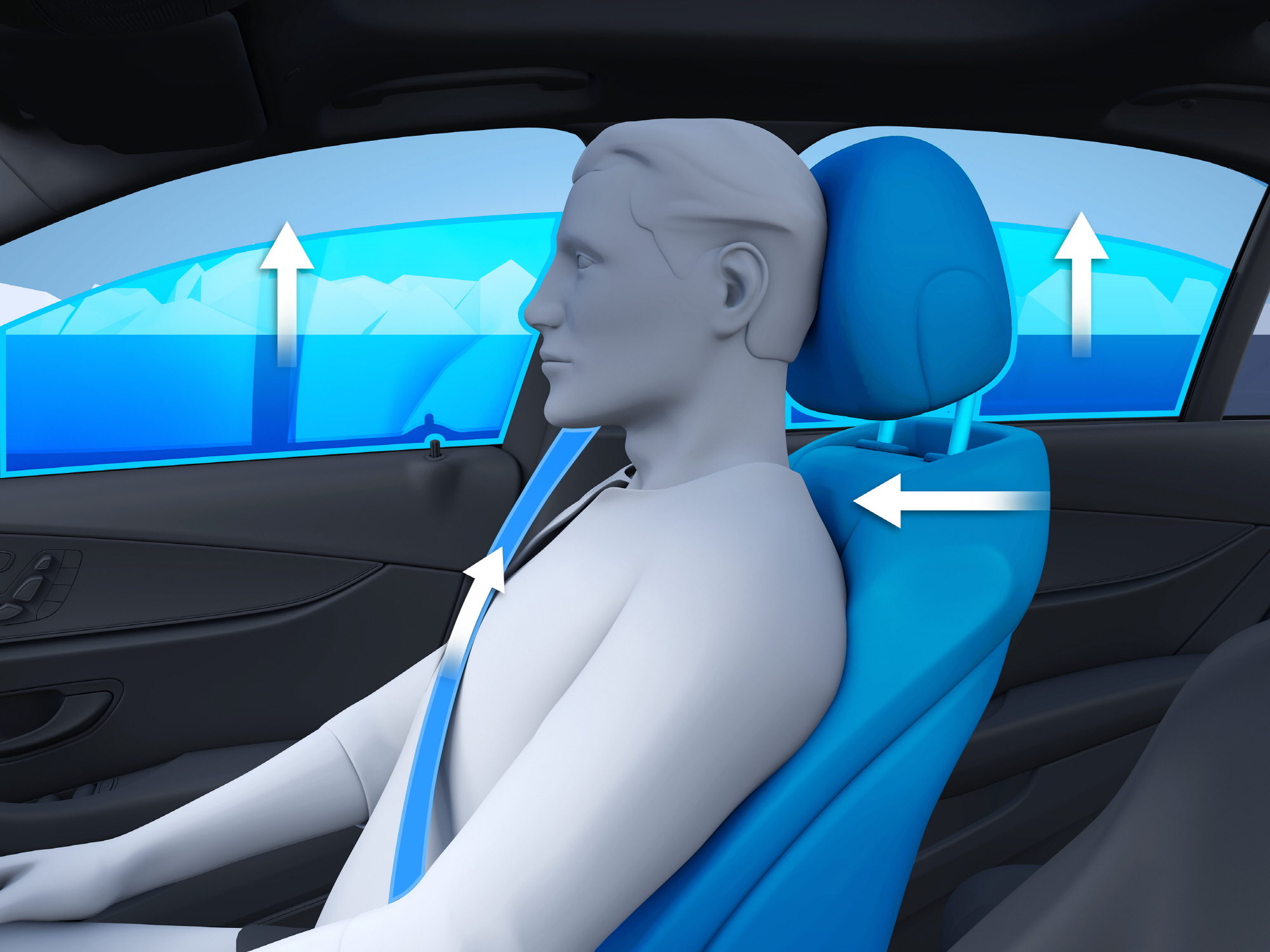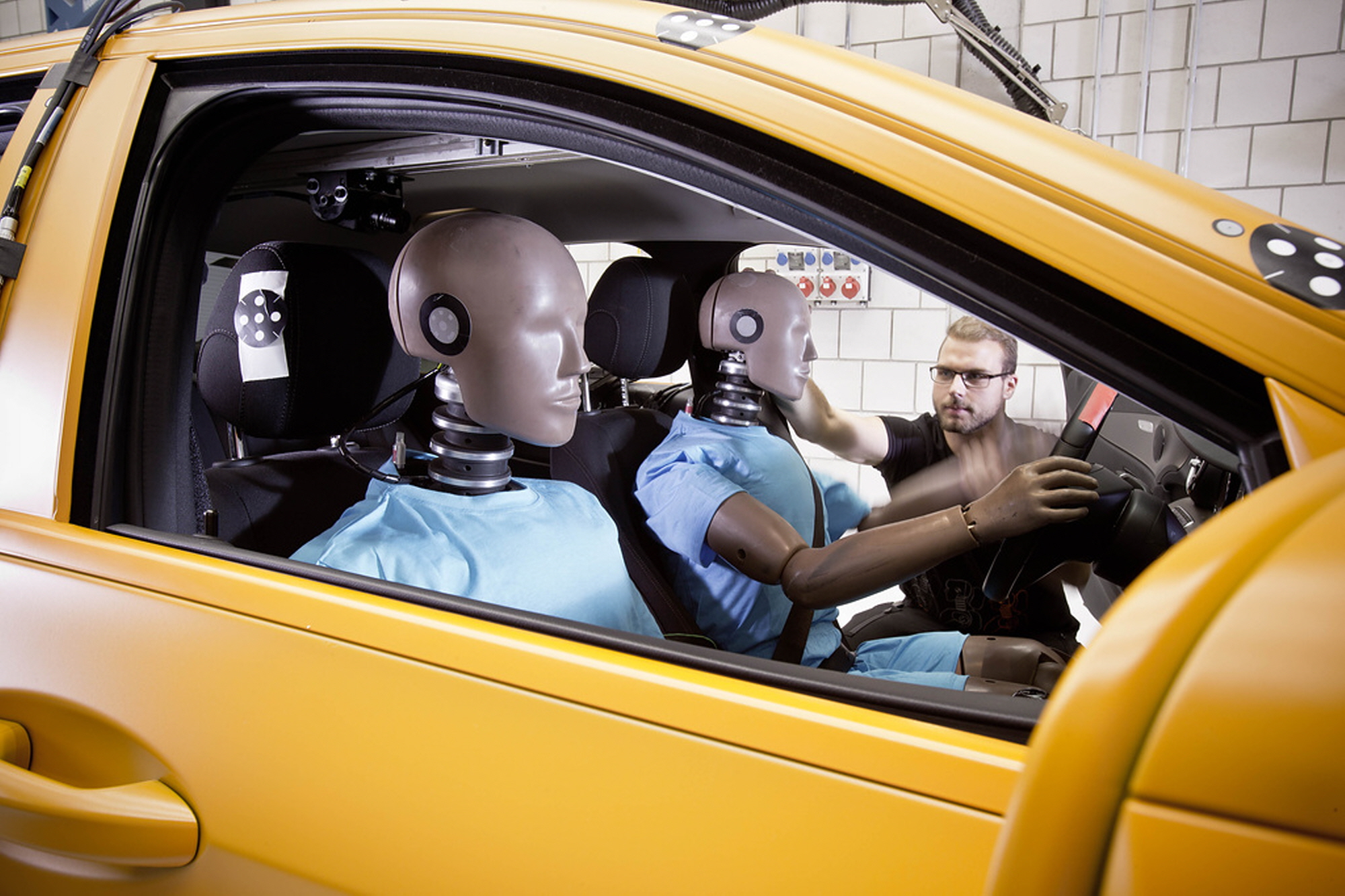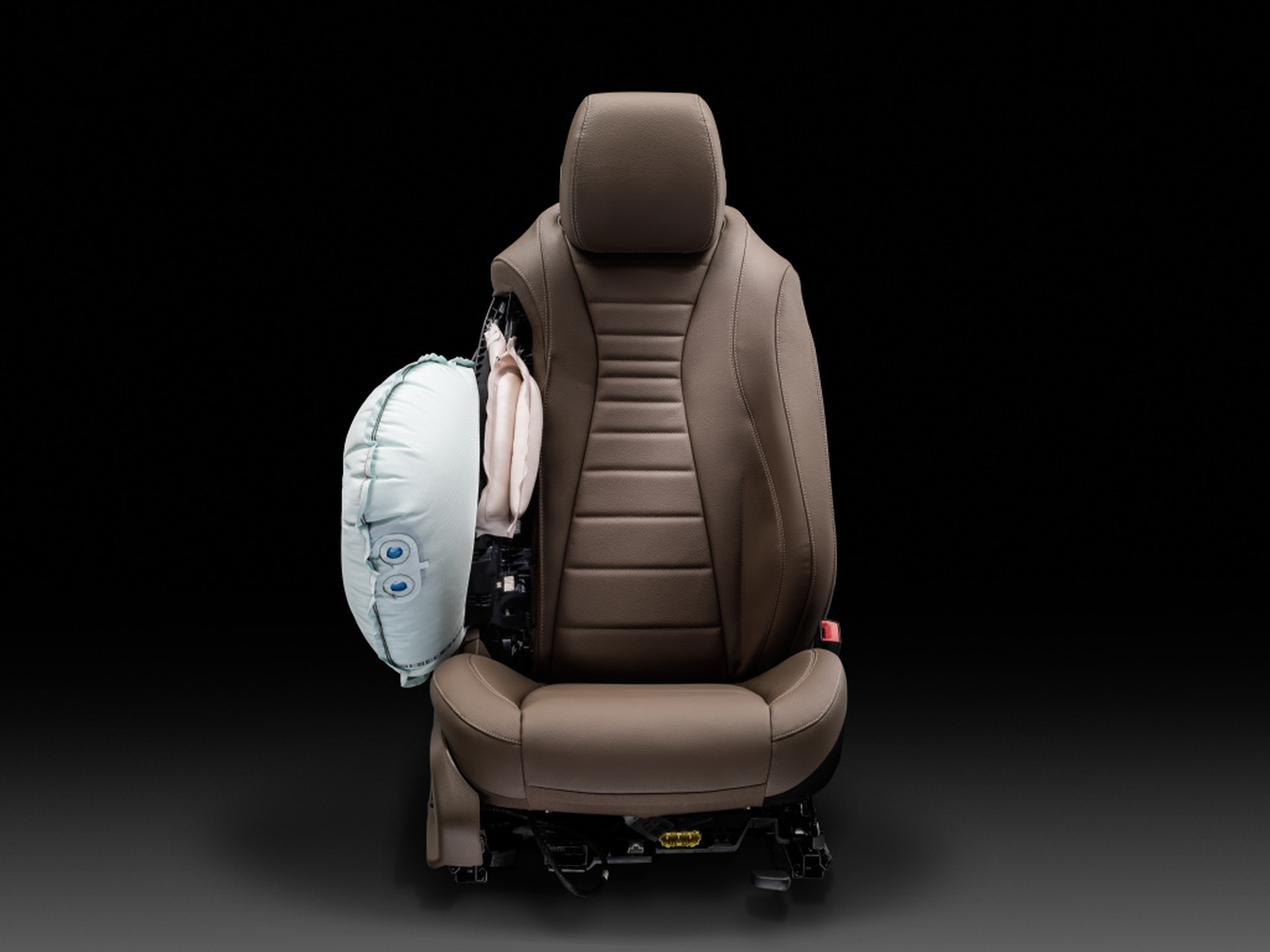
Mercedes-Benz’s PRE-SAFE technology, aimed at preventing passenger injuries, celebrates its 20th anniversary this year since its introduction in production vehicles.
Unveiled for the first time in 2002 with the S-Class, PRE-SAFE is a technology that actively detects signs of an impending accident through its active safety system and shares this information immediately with its passive safety system, enabling proactive measures to protect passengers approximately 0.2 seconds before a collision.
To realize the vision of accident-free driving, Mercedes-Benz has continuously innovated over the past two decades, evolving PRE-SAFE and pioneering a new era of automotive safety that blurs the lines between active and passive systems.
The roots of PRE-SAFE date back to the early 1990s. At that time, engineers at Mercedes-Benz noted that the signs of most collision accidents would typically manifest before an actual impact, while existing occupant protection systems only activated post-collision, failing to utilize the crucial seconds leading up to an accident.
As a response, Mercedes-Benz developed PRE-SAFE, which provides preventive protective measures from the moment a potential collision situation is recognized until the actual impact occurs.
The groundbreaking advancement of PRE-SAFE technology was significantly influenced by the company’s pioneering safety innovations, particularly the Anti-lock Braking System (ABS) and Electronic Stability Programme (ESP), which Mercedes-Benz introduced as core safety technologies.
In 1995, Mercedes-Benz introduced ESP in the S 600 Coupé, thus launching the first-ever active safety technology in the world. By the end of the 1990s, brake assist and ESP were standard in all Mercedes-Benz vehicles, allowing them to detect emergency braking situations and both oversteer and understeer conditions, which indicated the heightened risk of an accident.

In 2002, Mercedes-Benz first unveiled PRE-SAFE, a preventive technology that integrates active and passive safety systems through the S-Class.
PRE-SAFE® detects accident risks such as hard braking, strong oversteering or understeering, and dangerous steering maneuvers through brake assist and ESP, transmitting this information to the electronic control unit within 1/1000 second. The system autonomously minimizes potential injuries by closing sunroofs and windows, repositioning the seats to optimize airbag deployment, and taking other preventive measures.
In vehicles equipped with DISTRONIC PLUS and Brake Assist PLUS, PRE-SAFE utilizes data from short-range radar. Sensors in the front bumper provide tension to the front seat belts at the last moment before a collision, reducing the forces exerted on the driver and front passenger during an impact.
When the PRE-SAFE control unit detects a hazardous driving situation, multicontour seats immediately engage air chambers in the seat cushions and backrests to envelop and support the occupants, thereby reducing the risk of serious neck injuries from upper body movement during a collision.
In 2013, the new S-Class (W222) introduced the PRE-SAFE PLUS and PRE-SAFE Impulse functions. PRE-SAFE PLUS detects imminent rear collisions and flashes the rear hazard warning lights to alert vehicles behind. If the car comes to a stop to avoid a frontal impact, it locks the brakes to reduce the burden on passengers and the risk of secondary accidents.
PRE-SAFE Impulse pulls the seatbelt in the direction of the seat to create additional space before the initial impact, temporarily separating front-seat occupants from the force of the collision.
In 2016, PRE-SAFE Impulse Side was introduced alongside the E-Class (W213) as the world’s first system. Upon detection of an imminent side collision, the air chambers in the side bolsters of the seats inflate immediately, moving passengers towards the center of the vehicle to create crumple space. Simultaneously, PRE-SAFE Sound emits a brief interference signal through the vehicle’s sound system to contract the ear muscles, helping to reduce hearing damage caused by collision noise.
In 2020, the launch of the new S-Class (W223) introduced an even more advanced PRE-SAFE® Impulse Side function. This upgraded version raises the body by approximately 80mm through the E-Active Body Control suspension when detecting a side collision, directing the impact towards the vehicle’s solid structure below and thereby reducing the force experienced by the occupants.

Lee Sang-jin daedusj@autodiary.kr

